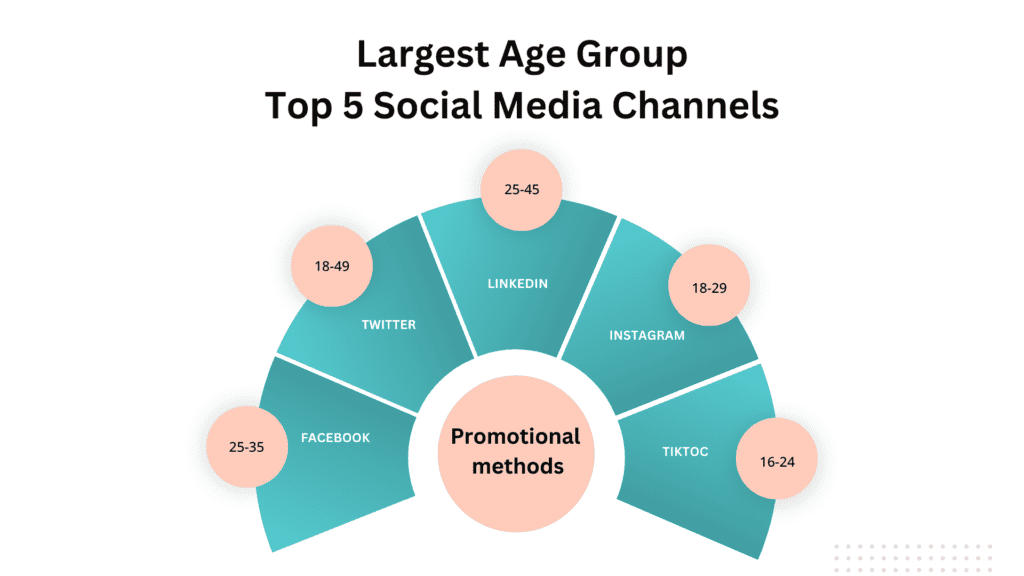Picture this: You’re at the helm of a small business, and despite having a fantastic product or service, you’re not reaching your growth potential.
Why? You might be missing a crucial piece of the puzzle – a well-defined marketing action plan.
A staggering 50% of small businesses will fail in the first five years. What is one of the main reasons? Lack of marketing plan.
A comprehensive marketing plan serves as your business’s compass, guiding your marketing decisions and helping you allocate your resources wisely. It’s about understanding where you stand, where you want to go, and precisely how you’ll get there.
Having no clear direction is one of the surest ways a business will fail. A marketing strategy provides direction and helps a company understand how its money is spent. It helps unveil areas of the company that are performing poorly and showcase the areas that are doing well.

A marketing plan is a blueprint for a business’s marketing efforts. It includes an analysis of the current market and who the company’s primary market is. It explains how it will stand out amongst its competition, a description of its promotional methods and budget, and how the company will measure its successes.
Essence of a Marketing Action Plan For Business
Running a business without a marketing action plan is like setting out on a journey without a map.

They are more than just documents; they’re a strategic framework ensuring you spend your marketing dollars effectively and efficiently. Businesses that implement ones are much more likely to have long-term success.
This is important because, in the competitive business landscape, where missteps can be costly, a well-crafted marketing action plan is your safeguard against wasteful spending and directionless efforts.
Businesses with them are better positioned to monitor their efforts and pivot quickly in complicated marketing conditions.
The 6 Steps Of Creating a Marketing Action Plan

Step 1: Examine The Environment
Begin by taking a comprehensive look at your business landscape. One of the best ways to do this is by conducting a SWOT analysis. Conducting a SWOT analysis is not just a task – it’s the starting line of your marketing action plan.
Understanding your strengths and weaknesses can help you leverage the positive aspects of the business and understand which aspects need improving. Examining the threats in the market as well as the opportunities is critical as well.
Is there a possibility of a recession? Is there a competitor moving in down the street? How’s my supply chain? Asking these questions can help you better prepare for future challenges.
Having a deep understanding of new and upcoming trends, consumer behavior shifts, and emerging technologies will allow you to prepare marketing efforts ahead of your competition. Gaining both brand recognition as well as market share.
Step 2: Understand Your Target Market
Knowing your audience is the heart and soul of any marketing action plan. It’s not just about who buys your products but understanding why they do so.
One of the most important things a business owner needs to know is who their market is.
Collecting and maintaining customer information is an excellent way of understanding what type of audience your business attracts.
When data isn’t available, business owners can segment different market aspects based on behavior, psychographic, geographic, and demographic traits. They can then create compelling marketing offers based on who they think their products will best serve.

Step 3: Positioning
Your product or service’s unique place in the market is a linchpin of your marketing action plan. Take a deep look at the products you are offering. What makes your products unique in the market? What makes them unique compared to your competitors?
If you know what makes your products unique, you can implement unique positioning strategies that showcase these features and appeal specifically to your target audience.
Step 4: Product, Promotion, Place, and Price
When marketing, many businesses focus on the tangible attributes of the product when the intangible qualities are the most important.
Product
As a business owner, you must deeply examine the product you are selling and the value it brings to the market. Think about how you can promote the benefits of having your product rather than just its specific features.
Some of the most successful brands in the world understand this. For example, when you see a commercial for a truck, they will often market the truck’s quality, durability, and reliability instead of its physical characteristics.
The company that can market the intangible benefits of owning the truck through creative advertisements is often the most successful in resonating with its customers.
Promotion
Look at the various promotional methods you are using. Are you using social media? If so, which one? Different media have different demographics. If you promote products on a channel your market isn’t on, your marketing efforts will likely be unheard.

Ensure your offer is irresistible. Ask yourself if it creates a strong emotional response, so much so that the consumer is eager to take action. This could mean either seeking more information or making a purchase.
Place
Place is a representation of your entire distribution chain. Examine how your product gets from the manufacturer to the consumer. Look to see if this process is as efficient as possible.
Flaws in this process can cost you valuable resources and customers. Examine your website and examine the pathway a customer would take from your landing page to the checkout. Ensure this path is as smooth as possible.
If a customer has a bad shopping experience, they may never do business with you again.
Price
As perceived value increases, so can the amount you, as an owner, charge. In many cases, business owners charge what they think a product is worth instead of what the customer is willing to pay. This is entirely the opposite mindset the owner should have. Examine the competition and how your products stack up against them.

Consumers are willing to pay higher prices if you can offer more value than what’s currently on the market. If your product or services provide equal or less value than what’s currently on the market, do not expect to command a price higher than a competitor.
Step 5: Create A Budget
During the great recession of 2008/2009, many businesses were struggling. Often, some of the first cuts made to save enterprises were to the marketing departments.
With less money, advertising slowed down, and with it, brand relevance in the minds of the consumers.
Later, it was found that businesses that kept marketing or even increased marketing spending during this time maintained and even increased their market share. At the end of the recession they were in a much better position in the hearts and minds of the consumers.
It’s essential to understand this as it shows that marketing is an investment that pays dividends the longer it goes on.
A general rule of thumb for marketing spend is 10% and 20% of total revenue.
The most important thing is ensuring you use each dollar as effectively as possible.
Step 6: Measure Success
A crucial aspect of any marketing action plan is measuring its success. Setting clear, measurable goals and using analytics to track your progress is imperative.
Are you looking to increase website traffic, boost sales, or enhance brand awareness? Regularly review these metrics to understand what’s working and what’s not.
This data-driven approach will allow you to make informed decisions and fine-tune your marketing action plan for better results.
Putting Your Plan to Use

Once your marketing action plan is in place, it’s crucial to implement it diligently. This plan should be a living document, adapted as you gather new insights and data.
Make it accessible to all decision-makers in your company to ensure a cohesive and unified approach to your marketing efforts.
Regularly review and adjust your plan to stay aligned with changing market conditions and business objectives
Conclusion
In summary, a marketing action plan is not just a tool for guiding your marketing efforts; it’s a critical component for the growth and success of your business.
It helps you identify areas of strength and improvement, ensuring that you’re not just moving forward, but doing so in the right direction.
Creating a successful marketing action plan is a journey that involves understanding your market, positioning your brand effectively, leveraging digital tools and social media, and continuously measuring and refining your strategies.
As you embark on this journey, remember that the effectiveness of your marketing action plan hinges on your commitment to it and your willingness to adapt and evolve.

Love what you’ve read? Share this post with your friends and subscribe to our blog for more amazing content delivered straight to your inbox!
Click below and keep spreading the knowledge!






Pingback: How to Effectively Utilize Target Email Marketing to Increase Sales - Reisinger Strategies Group
Pingback: Is SEO Worth It For Small Business? 4 Reasons You Should Implement it Today! - Reisinger Strategies Group